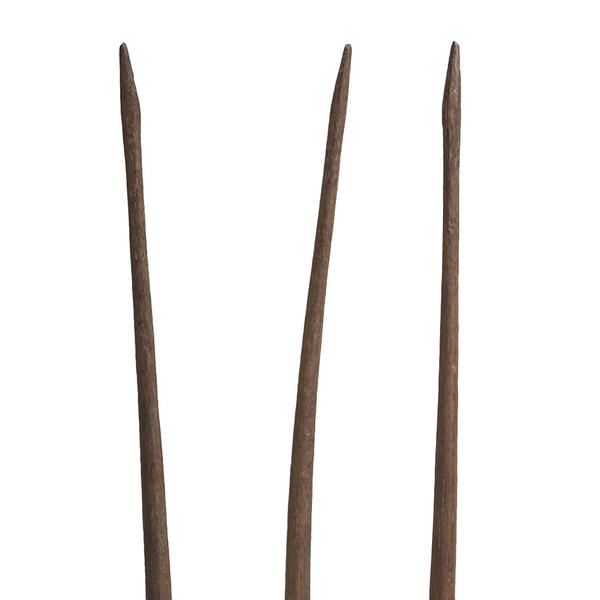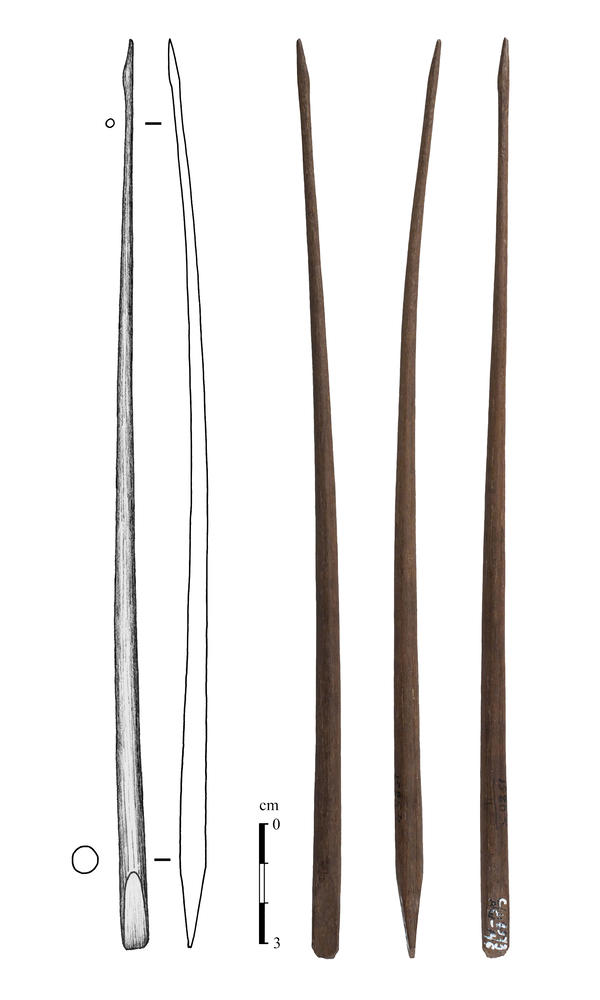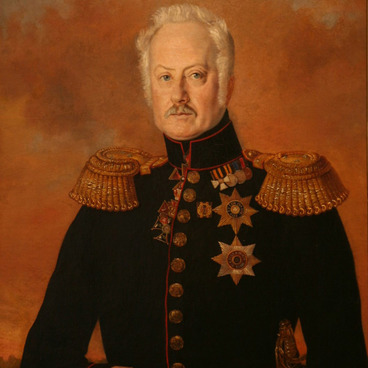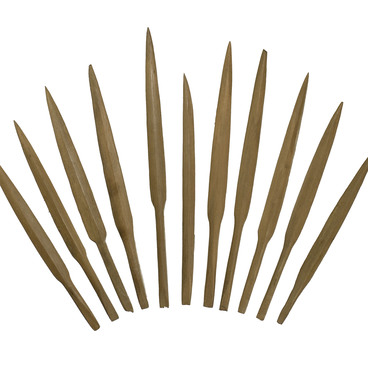The two bone arrowheads with bird heads appeared in the Shigir collection of the museum in 1911. Onisim Kler, the founder of the Urals Society of Amateurs of Natural Sciences, donated them to the museum from his private collection of antiquities. Where exactly the exhibits were found is not known.
Arrowhead with a Bird Head
Dimensions
19x0,8x0,8 cm
19х0.8х0.8 cm
19х0.8х0.8 cm
Technique
Scraping, planing, grinding
Exhibition
0
Open in app#8
Unknown Author
Arrowhead with a Bird Head
#9
#10
The arrowheads were made in the Mesolithic age (13000-8000 B.C.). There are small sculptures of waterfowl on their tips.
#17
Description
#12
The arrowheads have a thin elongated conical tip. Its cross section is rounded. The lower part of the weapon is made quite massive. It ends with a base, the part on which the arrow shaft is set. The first arrowhead has a pyramid-shaped base, the second one - wedge-shaped.
Arrowhead with the sculpture of a bird and a pyramid-shaped base from the Shigir collection.
#13
Arrowhead with the sculpture of a bird and a pyramid-shaped base from the Shigir collection.
Both exhibits are made from tubular bones of big animals. Ancient people made thin bone plates from them which they used as pre-forms for arrowheads. To soften bone plates, they were put in a primitive ash-and-water alkaline solution.
#11
The surface of one of the arrowheads shows preliminary treatment of the plate - the pre-form was first scraped with a sharp object, a burin. The second one does not have any traces of preliminary work – the arrowhead was ground with quartz sand and then polished with a piece of leather. Only the figures of birds and arrowhead bases were left untouched.
#15
Symbolism
#14
During the Mesolithic age, objects were often decorated with waterfowl. This image had a sacred meaning in the world outlook of the ancient Ural peoples. Ugric tribes had a myth about the genesis of the world in which the main role was played by the diving bird. According to the legend, it created the land from the silt raised from the bottom of the primordial ocean. According to the Karelo-Finnish epos, the Universe was created from the duck’s egg. The northern people considered waterfowl to be a messenger mediating between this and the other world.
#18
Apart from sculpted images of feathered animals made from bone, flint and wood, archaeologists discovered cave art and pottery with ornithological motifs. Such finds on the territory of the Urals and West Siberia are most often dated back to the Bronze Age, the Eneolithic Period (4000-3000 B.C.).
#19
Shigir collection
#20
The Shigir collection has over a thousand arrowheads. It got its name from the famous Shigir peat bog site which was in the vicinity of the modern city of Kirovgrad, Sverdlovsk oblast. In ancient times, there were a few big lakes in place of the peat deposits. Tribal communities settled on the shores of the lakes. In late 19th- early 20th century, gold miners found a lot of historical artefacts in the peat layers. The owner of the territory, Count Alexey Stenbock-Fermor donated all the finds to the museum and they became the foundation of the Shigir collection.
#21
O.E. Kler Sverdlovsk Regional Ethnography Museum
read morehide
00:00
00:00
1x
Arrowhead with a Bird Head
Dimensions
19x0,8x0,8 cm
19х0.8х0.8 cm
19х0.8х0.8 cm
Technique
Scraping, planing, grinding
Exhibition
0
Open in app
Share





